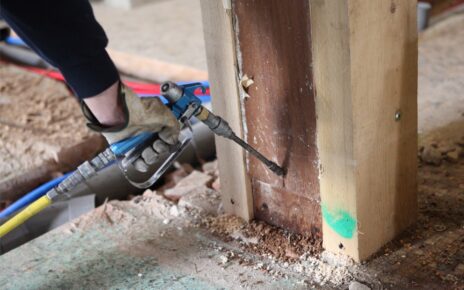Understanding the Importance of Asbestos Management Surveys
Asbestos, once admired for its heat resistance and insulating properties, has since been recognised for its profound health implications. Consequently, having an asbestos management survey is no longer a choice but a necessity, particularly for older buildings. So, what are the essential steps for asbestos management surveys?
- Identifying Potential Asbestos-Containing Materials (ACMs): These are commonly found in roofing sheets, insulation materials, floor tiles, and more. Always remember, any building built before 2000 could contain asbestos.
- Inspecting and Sampling Suspected ACMs: This involves taking a small sample from the suspected areas for lab testing. Remember, professionals must carry out this task to avoid asbestos exposure.
- Assessing the Condition and Risk: The professional then evaluates the condition of the ACMs and determines their risk level.
- Reporting and Developing a Management Plan: A comprehensive report is produced, highlighting the asbestos locations, its conditions, and recommendations for managing the risk.
The Role of Compliance in Asbestos Surveys
Ensuring compliance through asbestos surveys is paramount to your organisation’s health and safety obligations. But why is compliance so essential? Non-compliance can lead to severe legal implications, substantial fines, and even closure of premises. Moreover, there’s an ethical obligation to protect those using the building from potential asbestos-related health risks.
Implementing Effective Strategies for Asbestos Surveying
To effectively manage asbestos within your premises, a few practical strategies for asbestos surveying can come in handy:
- Engage a Licensed Professional: Asbestos surveys should never be a DIY project. It requires a trained and licensed professional to ensure safety and accuracy.
- Regular Asbestos Audits: Routine asbestos audits are essential for keeping your asbestos management plan up-to-date.
- Emergency Procedures: Establish clear protocols for accidental disturbances of ACMs, including evacuation plans and professional cleanup procedures.
- Asbestos Awareness Training: Everyone in the organisation should understand the risks associated with asbestos and the procedures in place.
So, what’s your asbestos management strategy like? Are you confident that you’re doing enough to protect everyone in your building from asbestos exposure?
A Proactive Approach to Asbestos Management
A proactive stance in maintaining asbestos management surveys can go a long way in ensuring a safe environment. Regular monitoring and inspections can identify changes in the condition of any known ACMs or highlight new areas of concern. By maintaining up-to-date asbestos registers and management plans, you can respond promptly and appropriately to any potential asbestos risks.
Learning from Past Experiences
Lessons from past asbestos exposure incidents illustrate the vital importance of robust asbestos management. For instance, schools built during the 1960s-1980s frequently used ACMs in construction. A lack of awareness and leadership led to numerous cases of asbestos exposure among staff and students, resulting in severe health impacts and costly legal battles.
Embracing Your Responsibility
So, how about your establishment? Is it equipped with the right measures to manage and monitor asbestos effectively? Remember, it’s not just about adhering to regulations – it’s about taking responsibility for the safety and well-being of people who trust you with their health every day.
In conclusion, a robust, proactive, and thoughtful approach is critical to effective asbestos management surveys. By recognising the importance of these surveys and incorporating the essential steps, you ensure compliance and create a safer and healthier environment.





